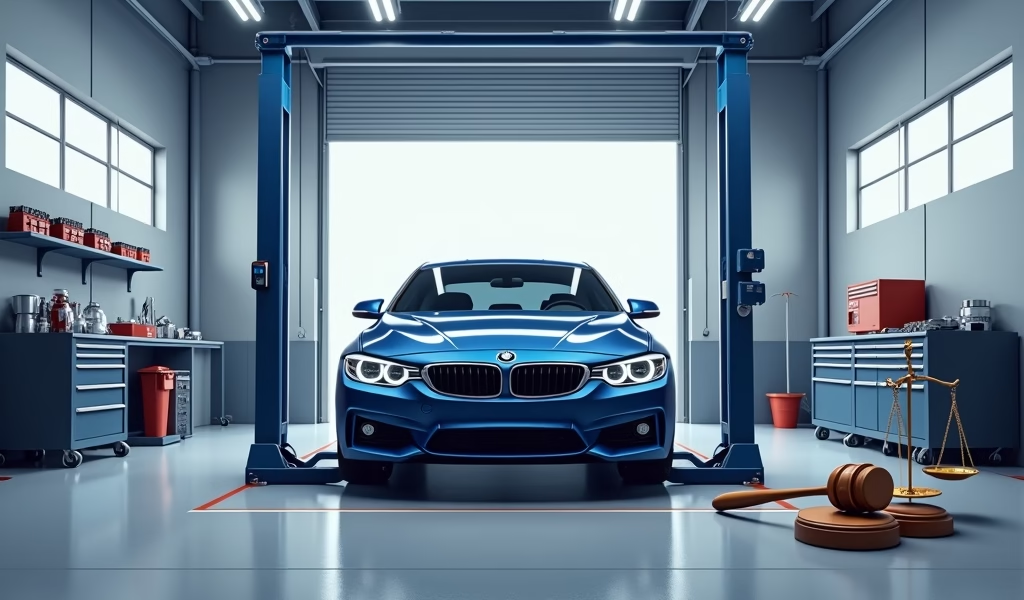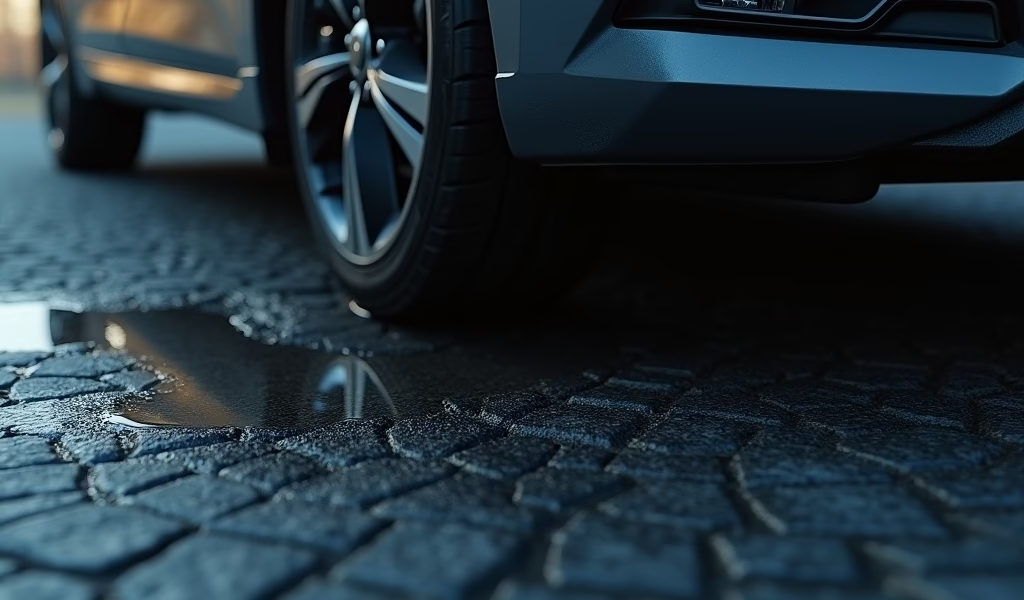Overview
This article outlines seven essential vehicle maintenance practices to prevent accidents, including regular oil changes, tire maintenance, brake inspections, addressing warning lights, seasonal checks, maintaining service records, and building a relationship with a reliable mechanic. The author emphasizes that proper maintenance not only protects the vehicle but also provides legal protection in case of accidents, potentially eliminating the need for lawyer involvement after crashes.
Table of Contents
- Preventative Maintenance: The Best Defense Against Accidents
- Tip #1: Regular Oil Changes – More Than Just Engine Protection
- Tip #2: Tire Maintenance Is Non-Negotiable
- Tip #3: Regular Brake Inspections Save Lives
- Tip #4: Never Ignore Dashboard Warning Lights
- Tip #5: Seasonal Maintenance Checks Are Crucial
- Tip #6: Maintain Comprehensive Service Records
- Tip #7: Build a Relationship with a Reliable Mechanic
- Conclusion: Staying Safe on the Road
- Frequently Asked Questions
Preventative Maintenance: The Best Defense Against Accidents
I’ve seen it countless times in my shop – folks coming in after a lawyer accident with damage that could have been prevented with basic maintenance. As both a certified mechanic and someone who’s helped drivers navigate post-accident repairs for over 20 years, I can tell you this: most serious car troubles announce themselves well before they cause accidents.
The connection between proper vehicle maintenance and avoiding accidents isn’t just mechanic talk – it’s backed by hard data. According to the National Highway Traffic Safety Administration, vehicle-related factors contribute to approximately 2% of crashes, with tire problems being the most common issue. That might sound small until you realize we’re talking about thousands of preventable accidents yearly.
When a lawyer handles a car accident case, one of the first things they investigate is vehicle maintenance history. Was that brake failure truly unpredictable, or did you ignore the squealing for three months? Your maintenance habits can become crucial evidence.
Let’s break down seven proven maintenance tips that can keep you from needing a lawyer after an accident. These aren’t just good for your wallet – they might save your life.
Tip #1: Regular Oil Changes – More Than Just Engine Protection
Think oil changes are just about engine longevity? Think again. Fresh oil is about safety as much as it is about maintenance. Oil doesn’t just lubricate – it cools critical engine components and prevents excessive wear that can lead to catastrophic failures.
I’ve seen engines seize on highways because someone stretched their oil change interval “just a little longer.” When that happens at 65 mph, you suddenly have zero control over a two-ton vehicle. No power steering. No power brakes. Just momentum and hope.
Follow your manufacturer’s recommended oil change intervals, typically between 3,000-7,500 miles depending on your driving conditions and oil type. Modern vehicles with electronic monitors make this easier, but don’t rely solely on that little light. Get in the habit of checking your dipstick monthly – oil level and quality tell important stories about your engine’s health.
Remember: oil changes are cheaper than engines, and infinitely cheaper than accidents. This simple maintenance task can prevent unexpected breakdowns in dangerous situations that might otherwise require motor vehicle accident lawyers to sort out afterward.

Tip #2: Tire Maintenance Is Non-Negotiable
Your tires are literally where the rubber meets the road – the only four contact patches connecting your vehicle to the pavement. When tires fail, even the best drivers lose control.
I’ve rebuilt cars after blowout accidents where the tire failure could have been spotted weeks earlier. The pattern is heartbreakingly predictable: uneven wear, ignored pressure warnings, visible damage that “didn’t seem that bad.”
Here’s your tire maintenance checklist:
- Check pressure monthly and before long trips (including the spare)
- Inspect tread depth using the penny test (Lincoln’s head should be partially covered)
- Look for sidewall cracks, bulges, or objects embedded in the tread
- Rotate tires every 5,000-7,000 miles
- Replace tires when tread depth reaches 4/32″ (winter driving) or 2/32″ (minimum legal in most states)
According to NHTSA research, properly maintained tires can improve handling, increase fuel efficiency, extend tire life, and most importantly, reduce the chance of a dangerous blowout or flat.
Don’t gamble with worn tires. The few minutes it takes to check them could prevent hours dealing with insurance companies and lawyers after an accident.
Tip #3: Regular Brake Inspections Save Lives
As a mechanic, few things concern me more than neglected brakes. Your vehicle’s ability to stop quickly can mean the difference between a near-miss and a life-changing collision requiring a lawyer for a car accident.
Brake components wear gradually, making it easy to adjust to declining performance without noticing. That slightly longer stopping distance becomes normal until the day you need to stop suddenly – and can’t.
Never ignore these warning signs:
- Squealing, grinding, or metallic scraping sounds
- Vibration or pulsation when braking
- Brake pedal feels soft or spongy
- Vehicle pulls to one side during braking
- Brake warning light illumination
Have your brakes professionally inspected at least annually, or every 10,000-12,000 miles. If you frequently drive in mountainous areas or heavy traffic, increase that frequency. Ask your mechanic to check brake fluid condition too – old fluid absorbs moisture and can dramatically reduce braking performance.
Remember, brake jobs are scheduled at your convenience. Brake failures choose their own timing – usually the worst possible moment.
Tip #4: Never Ignore Dashboard Warning Lights
Those little illuminated symbols aren’t just festive dashboard decorations. They’re your vehicle’s way of saying, “Hey, we need to talk about something important.”
I’ve lost count of how many customers have sheepishly admitted they drove for weeks or months with warning lights glowing. Modern vehicles have sophisticated onboard diagnostics that detect problems long before they become critical failures or potential accident causes.
Some lights demand immediate attention:
- Brake system warning light – Could indicate anything from low fluid to a serious system failure
- ABS light – Anti-lock brake system issues that could affect stopping ability
- Airbag/SRS light – Safety restraint system problems that could prevent proper deployment
- Temperature warning – Overheating that can lead to engine failure and loss of vehicle control
- Oil pressure warning – Immediate engine damage is occurring
Even the common check engine light deserves attention within a reasonable timeframe. While not all issues are immediately dangerous, they can affect fuel economy, emissions, and potentially cascade into more serious problems.
Many auto parts stores will read diagnostic codes for free, giving you information to make informed decisions. But for safety-critical systems, professional evaluation is always the safest choice.
Tip #5: Seasonal Maintenance Checks Are Crucial

Your vehicle faces different challenges as seasons change. What works perfectly in July might leave you stranded in January. Seasonal maintenance isn’t just about comfort – it’s about keeping you safe when conditions turn challenging.
Before winter arrives, focus on:
- Battery testing (cold temperatures reduce battery capacity by up to 50%)
- Cooling system inspection (yes, it’s crucial even in winter)
- Tire tread depth and possibly switching to winter tires
- Wiper blade condition and winter-rated washer fluid
- Heater and defroster operation
As warm weather approaches, prioritize:
- Air conditioning performance (to prevent distracted driving from discomfort)
- Cooling system pressure testing and fluid condition
- Brake inspection after winter driving conditions
- Suspension components (often damaged by winter potholes)
A simple seasonal inspection can identify worn components before they create dangerous situations. According to CDC transportation safety research, weather-related crashes kill nearly 5,000 people annually. Proper vehicle preparation significantly reduces these risks.
I recommend scheduling these check-ups around daylight saving time changes – it’s an easy reminder that works twice yearly.
Tip #6: Maintain Comprehensive Service Records
Service records might seem like boring paperwork, but they can be your best friend after an accident. Well-maintained records demonstrate you’ve been a responsible vehicle owner who prioritizes safety – something that matters tremendously if questions of vehicle-related negligence arise.
Beyond the legal protection, complete service records help you track maintenance patterns, stay ahead of recommended service intervals, and maintain your vehicle’s warranty coverage. They also significantly increase resale value when it’s time for your next vehicle.
Create a simple organization system:
- Keep digital copies of all repair and maintenance receipts
- Use a vehicle maintenance app or spreadsheet to track service dates
- Record even small repairs and maintenance items
- Keep notes about unusual noises, performance issues, or warning lights
When maintenance questions arise, these records help mechanics understand your vehicle’s history. And should you ever face questions about vehicle condition after an accident, documented maintenance history becomes invaluable evidence of your commitment to safe vehicle operation.
Tip #7: Build a Relationship with a Reliable Mechanic
Finding a trustworthy mechanic isn’t just about convenience – it’s a safety strategy. A mechanic who knows your vehicle’s history can spot concerning patterns and potential issues before they become dangerous.
The best mechanic-customer relationships are built on trust and communication. Your mechanic should explain issues clearly without unnecessary technical jargon, provide options at different price points when possible, and respect your decisions about maintenance timing.
Look for these qualities in a good mechanic:
- ASE certification and continuing education
- Willingness to show you the problem parts
- Clear explanations without condescension
- Realistic timeframes for repairs
- Prioritization of safety-critical repairs
A quality shop will help you develop a maintenance schedule that fits your budget while keeping safety the top priority. They’ll remember your vehicle’s quirks and history, often catching issues before they strand you or cause an accident.
Remember, the cheapest repair option isn’t always the safest. A trustworthy mechanic will help you understand which corners can be cut and which absolutely cannot when safety is concerned.
Conclusion: Staying Safe on the Road
After 20+ years in this industry, I’ve learned that the dividing line between a close call and a lawyer accident often comes down to vehicle maintenance. The seven tips we’ve covered aren’t just mechanic’s advice – they’re strategies that could keep you and your loved ones safe on the road.
Regular oil changes, proper tire maintenance, brake inspections, heeding warning lights, seasonal check-ups, maintaining service records, and working with a trusted mechanic form a comprehensive safety net. Each element reinforces the others, creating multiple layers of protection against preventable accidents.
The time and money invested in proper maintenance is insignificant compared to the potential costs – both financial and human – of a preventable accident. When you maintain your vehicle properly, you’re not just protecting your car; you’re protecting yourself, your passengers, and everyone else on the road.
Start today by checking one simple thing – your tire pressure, oil level, or even scheduling that oil change you’ve been postponing. Small steps lead to big safety improvements. Your future self will thank you when the brakes respond instantly in an emergency, or when your tires maintain traction during an unexpected rainstorm.
Remember: the best time to address vehicle maintenance is before you need a lawyer after an accident. Stay safe out there!
Frequently Asked Questions
What is a lawyer accident in the context of vehicle maintenance?
A “lawyer accident” refers to a collision or vehicle failure that leads to legal involvement due to negligence claims. These accidents often involve maintenance issues that could have been prevented with proper vehicle care.
How often should I have my brakes checked to prevent accidents?
Have your brakes professionally inspected at least once yearly or every 10,000-12,000 miles. Increase frequency if you notice any changes in braking performance or warning signs like squealing or grinding.
Can ignoring dashboard warning lights affect my insurance claim after an accident?
Yes, documented evidence that you ignored warning lights could be considered negligence. Insurance companies may reduce settlements or deny claims if they can prove you knowingly operated an unsafe vehicle.
What maintenance records should I keep to protect myself legally?
Keep all receipts and documentation for oil changes, tire rotations/replacements, brake services, and repairs of any safety systems. Records of addressing recall notices are particularly important for liability protection.
How does seasonal weather affect vehicle safety and accident risk?
Extreme temperatures affect battery performance, tire pressure, fluid viscosity, and various vehicle systems. Seasonal maintenance helps ensure your vehicle can respond properly to emergency situations regardless of weather conditions.

